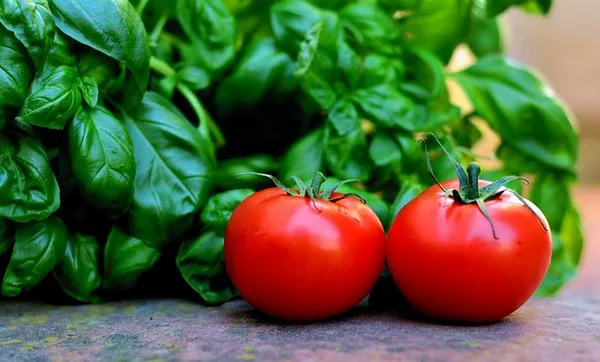University of Illinois Researchers Investigate Volatile Organic Compounds (VOCs) and Plant Interactions
In a recent study published in the Journal of Chemical Ecology, researchers from the University of Illinois Urbana-Champaign delved into the intricate world of volatile organic compounds (VOCs) produced by tomato plants and how these compounds change based on various factors.
Plants release VOCs as chemical signals to communicate with each other in response to threats or changes in their environment. These compounds serve multiple purposes, from preparing plant defenses to warning of threats and attracting beneficial soil microbes. The study aimed to understand how different factors, such as soil microbes, caterpillars, and tomato varieties, influence the type and amount of VOCs emitted.
Erinn Dady, a graduate student in the Ngumbi lab, explained the significance of VOCs, stating, “When a caterpillar chews on a leaf, the plant sends out a signal that calls out to the caterpillar’s predators. It’s like a billboard that tells them where lunch is.”
The researchers focused on four tomato varieties, two heirlooms (Amish Paste and Cherokee Purple) and two hybrids (Mountain Fresh and Valley Girl), commonly grown in central Illinois. Previous studies mainly examined tomato varieties grown on a large scale for processing.
Surprisingly, the study found that both arbuscular mycorrhizal fungi (AMF) and caterpillars separately decreased VOC emissions, with minimal effects when both were present. Additionally, hybrid tomatoes emitted lower quantities of volatiles compared to heirloom tomatoes.
Esther Ngumbi, an assistant professor of integrative biology, expressed concern over the compromised plant defenses due to breeding processes, stating, “Our work suggests that we are compromising plant defenses through our breeding processes.”
Despite the decrease in VOCs, plants associated with AMF showed higher leaf biomass and more complex root structures, indicating potential benefits. Interestingly, plants treated with caterpillars exhibited greater growth, challenging expectations.
The study sheds light on the sophisticated ways in which plants actively respond to their environment through chemical communication, emphasizing the importance of understanding plant chemistry in agricultural and ecological contexts.


